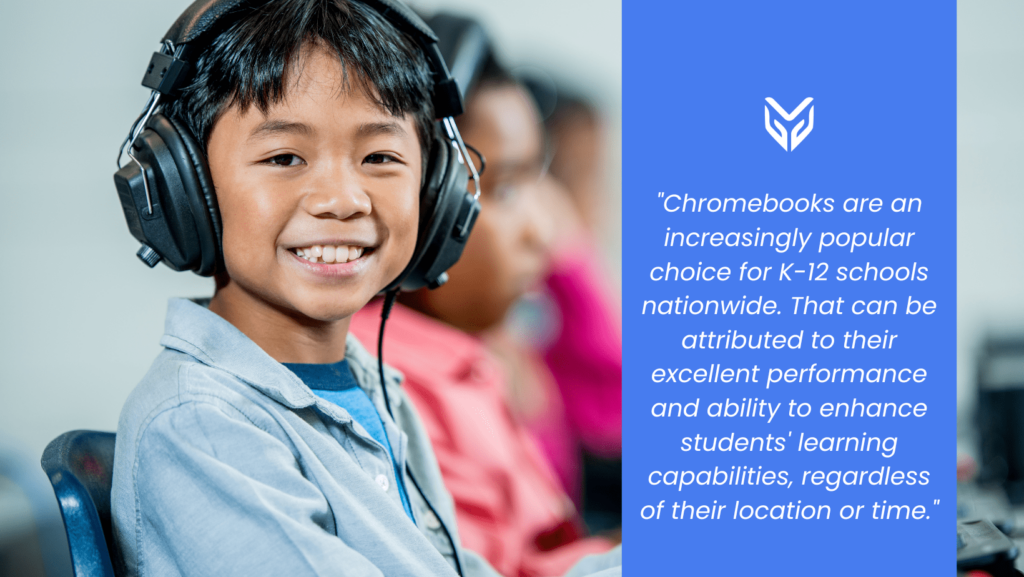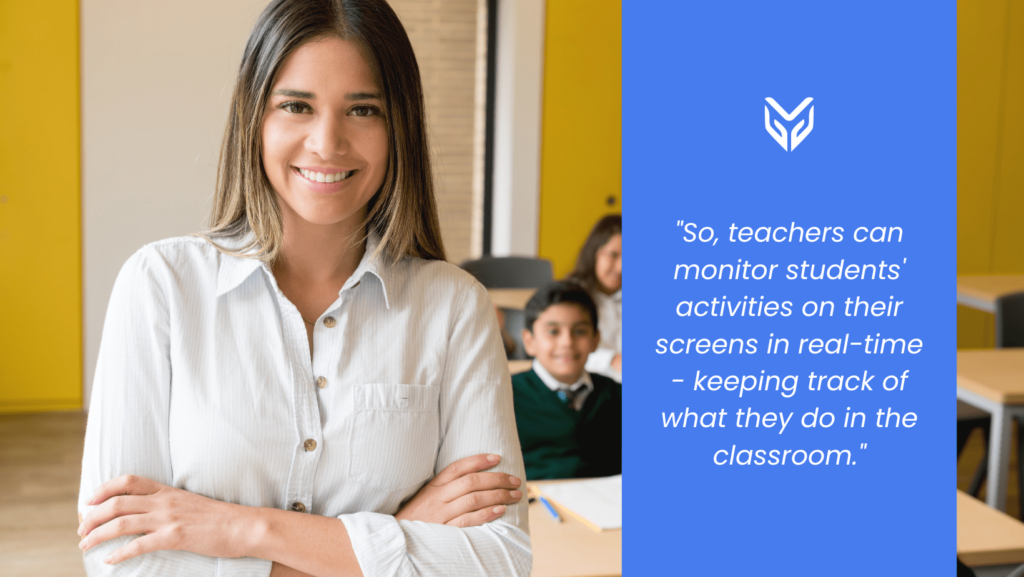NEWS
5 Things You Should Know About Chromebook Monitoring

In today’s world, where technology is being used more than ever in schools, it is becoming increasingly important for teachers and administrators to stay on top of everything students do in the classroom, including their online activities. So nowadays, when 1:1 school districts are becoming more and more popular, and Chromebooks and similar devices present a part of practically every K-12 classroom, understanding and implementing effective methods of using Chromebook monitoring is crucial.
With technology becoming more integrated into our lives, it’s essential to consider its impact on our children. And education is no exception to the trend of growing technology usage. With the goal of enhancing the learning experience, Chromebooks have become a popular school choice. With them, they provide students with access to educational resources and diversify their learning.

Chromebooks provide a convenient and affordable way for students to access the Internet and other digital resources. But even if children and teachers know how to use them, staying on top of students’ online activities while using them still remains a struggle for some schools. While EdTech devices provide tools for better organized and more efficient classroom work, such technology usage comes with potential misuse.
When given their Chromebooks, students’ thoughts indeed wander in directions unrelated to the school work at hand. Did you know that research shows K-12 students’ attention spans vary from 12-18 minutes for 6-year-olds to 32-48 minutes for 16-year-olds? And this is why keeping an eye on the activities behind their screens is essential for efficient and safe learning. Here are five things you should know about Chromebook monitoring in the classroom:
#1 What Is Chromebook Monitoring?
Chromebooks are an increasingly popular choice for K-12 schools nationwide. That can be attributed to their excellent performance and ability to enhance students’ learning capabilities, regardless of their location or time.

Chromebook monitoring refers to supervising and tracking Chromebook users’ activities, particularly in a classroom or educational setting. It can be done through various software programs or tools which provide real-time monitoring and reporting features. These tools can help educators stay on top of student progress and ensure that the devices are used effectively for educational purposes. But that is only some of what they offer. Besides in-time monitoring sophisticated software also includes the option of filtering content, K-12 threat detection, tracking students’ progress over time – all with the goal of providing easier classroom management and student safety.
#2 Why Is Chromebook Monitoring Necessary for Your Classrooms?
Educational Technology (EdTech) use is beneficial for improving students’ learning in a way most compatible with their individual learning needs. And classroom management systems especially come in very handy. Some of the reasons why classroom monitoring is essential for your classrooms include the following:
- Protecting students from inappropriate internet content, cyberbullying, and other online threats
- Ensuring students’ focus and engagement on the given tasks
- Ensuring academic integrity by identifying cheating and plagiarizing
- Accessing student progress and identifying potential academic struggles to recognize where they may need additional support or guidance.

#3 How Does It Work?
Chromebook monitoring works similarly to average computer screen sharing. Screen sharing, or desktop sharing, is the practice of sharing the contents of your screen with another device or multiple devices. In this case, the students share their screens with their teacher. This can include every element on a screen or simply one window. It breaks down the information (image) on the device’s screen into encoded packets and sends them to the teacher’s device. The teacher’s device then rebuilds the image from the packets received from the students’ devices.
Nowadays, screen-sharing software is advanced enough to both detect movement or change on the transmitting screen to transmit information only when something happens on the screen (whether it be a movement of the mouse or opening a new tab) and to compress the data sent to minimize bandwidth usage.
So, teachers can monitor students’ activities on their screens in real-time – keeping track of what they do in the classroom. This is usually shown on dashboards, where they can overview screens of all students in the classroom.

#4 What Can Be Monitored?
Functions of individual classroom monitoring tools differ, but Chromebook monitoring often includes monitoring the websites students visit, search engine queries, the used applications, and how much time students spend on them. It can even keep track of the time spent on individual websites and applications and track the students’ activity by categories. While doing that, it also connects analytics of the activities. This is useful since the collected data can be later used in further curriculum development and pedagogy improvement.
#5 What Are Some of Its Main Benefits?
Chromebook monitoring comes with many benefits. Monitoring students’ screens is effective for keeping students safe, productive, and ensuring equitable access to educational opportunities. Some of the main benefits of monitoring include the following:
- Keeping students safe: Chromebook monitoring can help schools protect their students from online dangers such as cyberbullying and inappropriate content. This technology can track online activities and alert school administrators when it detects inappropriate behavior. It can also help schools create safer learning environments by limiting students’ access to certain websites or online activities.
- Enhancing students’ engagement and productivity: Chromebook monitoring can help teachers ensure students use their devices for educational purposes. This technology can track how long students spend on websites or apps and block unwanted and distracting content. PPractical student screen monitoring tools allow teachers to enforce and close unwanted content and set up filters and policies to block harmful websites. They also offer progress-tracking functions for staying on top of students’ progress and much more. And technology is also a great way of engaging the students to participate and do school work in ways that would not be possible without technological support.
- Simpler classroom management: classroom monitoring systems are centralized platforms that allow you to have complete control of the goings-on in the classroom. And besides staying on top of the lessons from every corner of the classroom, you can also review students’ progress over time and guide them on their learning path in the long run.
So, Is Chromebook Monitoring a “Yes” or a “No”?
In conclusion, Chromebook monitoring is handy and crucial for several reasons. First and foremost, it allows you to ensure that students stay on task and do not engage in inappropriate or distracting activities during class time. Additionally, monitoring helps identify potential issues, such as cyberbullying or online harassment, before they escalate. It also ensures students are using technology responsibly and ethically. All in all, Chromebook monitoring significantly benefits students, educators, and administrators and is an essential tool for K-12 schools.
SOURCES
[1] Educational Technology: How Important Is It In Today’s Education Industry?
[2] NORMAL ATTENTION SPAN EXPECTATIONS BY AGE





